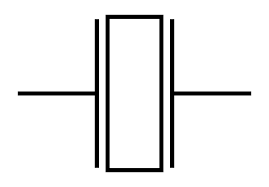Crystal and Oscillator Definition
A crystal oscillator is an electronic device that uses the mechanical resonance of a vibrating quartz crystal to generate a precise and stable electrical signal. It is a critical component in various electronic circuits and devices, primarily serving as a timing reference or clock generator. The fundamental principle behind a crystal oscillator is the piezoelectric effect, where an applied electrical field causes the quartz crystal to vibrate at a specific frequency determined by its physical properties.
Passive Crystal Oscillator
A passive crystal oscillator is a type of electronic oscillator circuit that relies on the natural resonance of a piezoelectric crystal to generate a stable and precise electrical signal at a specific frequency. This oscillator is classified as "passive" because it doesn't require an external power source to maintain its oscillations once it's started.
Passive crystal oscillators are commonly used in electronic devices such as microcontrollers, watches, communication equipment, and digital systems where accurate and stable clock signals are essential. Their reliability and precision make them indispensable in modern electronics.
Oscillator vs Crystal
Oscillator and crystal are related components in electronic circuits, often found together, but they serve different functions. Here's a comparison between an oscillator and a crystal:
| Aspect |
Oscillator |
Crystal Oscillator |
| Function |
Generates continuous periodic signals |
Provides precise and stable frequency reference |
| Components |
Typically consists of an amplifier and a feedback network |
Primarily consists of a piezoelectric crystal resonator |
| Power Source |
Requires an external power source for continuous operation |
Can operate passively once initiated but may need an external "kick" to start |
| Frequency Control |
Frequency can be adjusted or tuned as needed |
Frequency is fixed and determined by the characteristics of the crystal |
| Frequency Stability |
Generally less stable and may drift over time |
Extremely stable and precise, minimal frequency drift |
| Applications |
Used in signal generation, timing circuits, RF generation, etc. |
Used in devices requiring highly accurate timing, such as microcontrollers, watches, and communication equipment |
| Adjustability |
Frequency is adjustable, can be fine-tuned |
Frequency is not adjustable, preset by the crystal's properties |
| Typical Waveform |
Can generate various waveforms (sine, square, etc.) |
Typically generates square waves |
| Start-Up Time |
Starts instantly upon applying power |
May require some time to stabilize after initial power-up |
In summary, an oscillator is an active electronic circuit that generates a continuous waveform at a specified frequency and requires an external power source. A crystal, on the other hand, is a passive component that serves as a highly stable and precise frequency reference. Crystals are often used within oscillator circuits to provide accurate timing signals.
Do Crystal Oscillators have Polarity
Crystal oscillators themselves do not have polarity in the same way that components like diodes or capacitors do. Polarity usually refers to the orientation or direction in which current should flow or voltage should be applied to a component.
Crystal oscillators are electronic devices that generate precise and stable electrical signals with a well-defined frequency based on the mechanical vibrations of a piezoelectric crystal. They typically have two leads or terminals for connection to an electronic circuit, labeled as "input" and "output" or "X" and "Y." However, the orientation of these connections doesn't establish polarity in the sense that reversing them would cause a malfunction. The crystal's properties and internal structure determine its behavior.
So, while crystal oscillators have specific terminal designations for proper connectivity, they do not have polarity in the conventional electronic component sense.
Where to Buy Crystal Oscillator
Nantian Electronics carries a variety of crystal oscillators from various electronics manufacturers including Murata, Abracon Corporation, Epson, EPCOS, Citizen Finedevice, Fox Electronics, and AVX. As an excellent crystal oscillator supplier. Nantian electronic components supplier has price advantage in various crystal oscillators.
Frequently Asked Questions
What is oscillator and types of oscillators?
An oscillator is an electronic circuit that generates repetitive waveforms, such as sinusoidal, square, or sawtooth waves. These oscillations serve as crucial timing signals in various electronic applications. There are several types of oscillators, including LC oscillators that use inductors and capacitors, RC oscillators with resistors and capacitors, highly stable crystal oscillators relying on piezoelectric crystals, voltage-controlled oscillators (VCOs) that offer frequency control via voltage input, and more specialized variants like relaxation oscillators and sawtooth oscillators.
What are the characteristics of a crystal oscillator?
The crystal oscillator has the physical property of forward and reverse piezoelectric effects, which can produce very weak periodic oscillation signals. The signals can be used as signal sources after amplification, filtering and other processes.
What does a crystal oscillator consist of?
The crystal oscillator is mainly composed of crystal and peripheral components.
What is the symbol for crystal oscillator?
The graphic symbol of the crystal oscillator is shown in the figure below.

Crystal Oscillator Symbol(IEC)
What is a quartz crystal resonator?
Cut a thin slice from the quartz crystal according to a certain orientation, polish both ends of the slice and coat it with a conductive silver layer, then connect two electrodes from the silver layer and package them. The component thus formed is called a quartz crystal resonator, or quartz for short. crystal.
What are the properties of quartz crystal?
Quartz crystal has two resonant frequencies, fs and fp, fp is slightly larger than fs. When the frequencies of the signals applied to both ends of the quartz crystal are different, it will show different characteristics:
- When f=fs, the quartz crystal is resistive, which is equivalent to a resistor with a small resistance value.
- When f≥fp, the quartz crystal is capacitive, equivalent to a capacitor